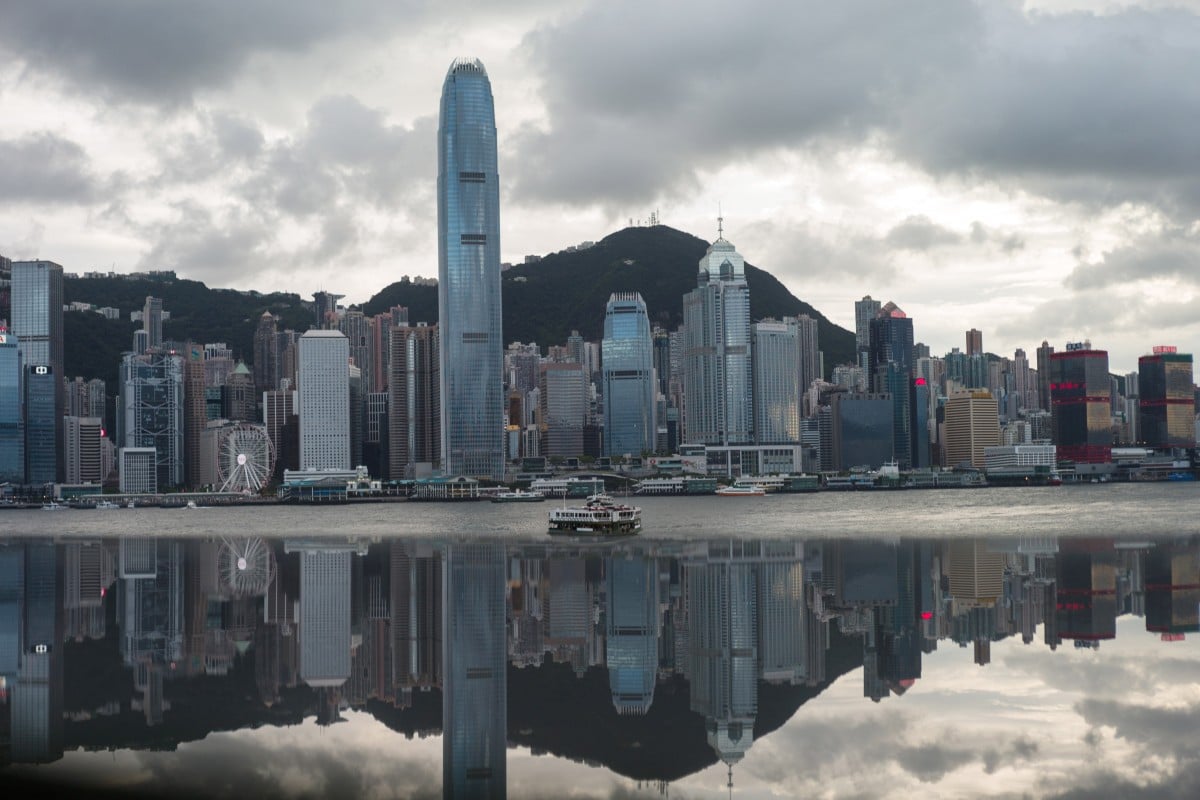Source: SCMP (2/18/19)
China’s State Council reveals details of ‘Greater Bay Area’ plan to turn Hong Kong and 10 neighbouring cities into economic hub
Years in the making, scheme embodies President Xi Jinping’s ambition to build innovation and finance powerhouse to rival Silicon Valley and Tokyo Bay Area
By Tony Cheung and He Huifeng

Hong Kong is positioned as the international finance, shipping and trade centre under the bay area plan. Photo: EPA-EFE
A cluster of world-class cities for work, life and leisure forms the central vision of the “Greater Bay Area” finally unveiled by the Chinese government late on Monday, laying out a road map to what it hailed as the new era of opening up.
Coming 40 years after the 1978 opening up of China, the State Council published a document setting out an ambitious plan to transform 11 cities around the Pearl River Delta into a thriving global centre of technology, innovation and economic vibrancy
The blueprint identified five “strategic orientations” that include closer integration between the mainland, Hong Kong and Macau while upholding the governing principle of “one country, two systems”.
It sets out a timetable such that by 2022, the framework for an international first-class bay area and world-class city cluster should essentially be formed, while regional development should become more coordinated by that date.
The next milestone will be 2035. By then, the markets within the bay area should basically be highly connected, with effective and efficient flows of various resources and factors of production.
It also confirmed that Hong Kong, Macau, Shenzhen and Guangzhou would be the core cities of the bay area, pledging to “consolidate and enhance Hong Kong’s status as international financial, transportation and trade centre as well as an international aviation hub”.
“The development of the Guangdong-Hong Kong-Macau Greater Bay Area is a national strategy personally devised, personally planned and personally driven by President Xi Jinping,” a spokesman for her administration said.
“The opportunities for Hong Kong brought about by the development of the Greater Bay Area involve two aspects. First, it can help identify new areas of growth for Hong Kong and foster the diversified development of its economy and industries. Second, it will expand the space for living and development of Hong Kong residents.”
[Infographics: China’s ‘Greater Bay Area’ integration scheme]
Years in the making, the “Greater Bay Area” plan embodies President Xi Jinping’s ambition to integrate the cities into an innovation and financial hub to rival places such as Silicon Valley and the Tokyo Bay Area.
The bay area covers Hong Kong, Macau and nine cities in Guangdong province. The 11 economies cover more than 56,500 sq km and were worth US$1.58 trillion in 2017, about the same as South Korea or Russia. The area also has a combined population of about 67.6 million.
Lam previously said more details of the plan would surface at a symposium in the city on Thursday involving officials from China’s National Development and Reform Commission, as well as leaders of Guangdong and Macau. She also called for cooperation, rather than unhealthy competition, with mainland Chinese cities over the benefits of the plan.
The Post reported on Saturday that the much awaited blueprint had marked 2020 and 2035 as key stages of development.
For decades, Guangdong and its neighbouring provinces have been trying to forge closer ties with Hong Kong and Macau to boost local economic growth.
In 2004, Guangdong launched the “Pan-Pearl River Delta” regional cooperation scheme, also known as “9+2”, to speed up economic amalgamation with nine neighbouring provinces as well as Hong Kong and Macau.
The bay area concept dates back to 2011, when it was proposed in a study by Guangdong authorities.
In 2017, it was officially endorsed by Premier Li Keqiang in his government work report. Last June, Vice-Premier Han Zheng, the state leader overseeing the scheme and the city’s affairs, told Lam the bay area plans were “personally planned, personally pushed” by Xi.
Last month, Zhang Xiaoming, head of Beijing’s Hong Kong and Macau Affairs Office, revealed that Hong Kong, Macau, Guangzhou and Shenzhen would be the central cities in the bay area, and each had its own unique position.
International standards to be at core of ‘Greater Bay Area’ plan
Hong Kong will be the international finance, shipping and trade centre; Macau will be a global tourism hub and a platform for trade with Portuguese-speaking countries such as Brazil. Guangzhou will take a leading role as a provincial capital and national central city, while Shenzhen will play its part as a special economic zone and home of China’s innovation and technology giants.
The planners hope the advantages these four cities enjoy can complement each other and offset the challenges brought by gaps in the legal and economic systems.
Substantial questions remain, such as how Guangdong, Hong Kong and Macau put down territoriality and collaborate, while keeping Hong Kong and Macau’s separate customs territories and legal systems.
Setting integration aside, Guangdong province faces problems of its own.
Last year, the province missed its 7 per cent growth target and expanded by 6.8 per cent – with just 5.1 per cent growth in foreign trade, as it struggled to reduce its reliance on low-end manufacturing and exports.
Even in the local heartland of technology, Shenzhen, innovation-driven sectors slowed in growth last year. Concerns have been raised among many private business operators, there and throughout China.